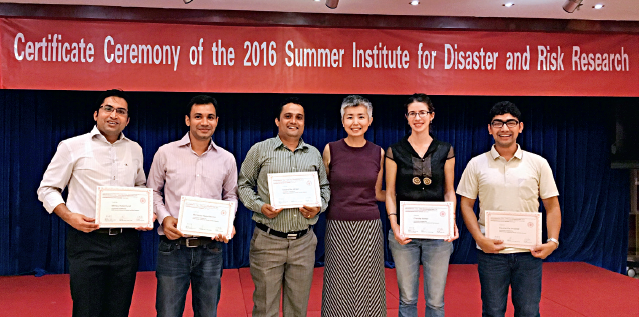Protecting People from Natural Disasters
China Today, June 14, 2017 Adjust font size:
Supporting Decision-Making
Yang is mainly engaged in infrastructure risk assessment and management, and community-based disaster risk reduction.
She has been in charge of some national level projects. One of them was under the National Science Foundation of China, studying the cascade effect on a region by multiple natural disasters. Another example is a research project Yang led under the National Basic Research Program (also known as 973 Program), looking at the relationship between global change and environmental risks. She and her team members made great achievements in assessing the risk of infrastructure when a disaster strikes and applying relevant modeling.
Heavy rainfall hit Beijing on July 21, 2012. Yang, by utilizing a disaster impact analysis model created by her team, created a simulation of the scenario with the flooded streets and inadequate drainage systems. The model accurately showed the changes in traffic flow over the transport network throughout the whole process.
“Our research provides a theoretical basis for investing in resilient infrastructure,” said Yang.
Another of Yang’s stand-out achievements was to establish a model assessing the risks posed to the infrastructure network during natural disasters. Yang and her team analyzed the typhoon data from the past 60 years in Hainan Province. By creating a typhoon model, including the typhoon’s characteristics, landing position and its size, Yang’s team conducted research into the typhoon’s impact on road functions and road transport, in order to make alternative emergency response plans.
“A good emergency response plan should be able to serve different parties,” Yang explained. “For example, drivers can quickly know about possible traffic conditions during the disaster and choose the right way to go. The traffic management department can make plans in advance as they can predict the loss of transport capacities. A good emergency response plan can also guide emergency response, helping the decision-makers decide which sections of road should be fixed immediately and which sections can be set aside and dealt with later.”

Professor Yang poses for a photograph with students from Nepal, the U.K. and Bangladesh at an international summer training program on disaster and risk research in 2016
As the society and economy continues to develop and people’s living conditions improve, it becomes increasingly necessary to address community-based disaster prevention and mitigation. Over the past few years, Yang has launched surveys and studies in communities and provided training to residents on how to create and use risk maps. “Our aim is to let people know where is safe and where is dangerous, and where the evacuation routes are when disasters strike,” explained Yang.
Their research provides a theoretical basis for governments at various levels to make decisions when choosing locations for emergency shelters and planning for evacuation routes.